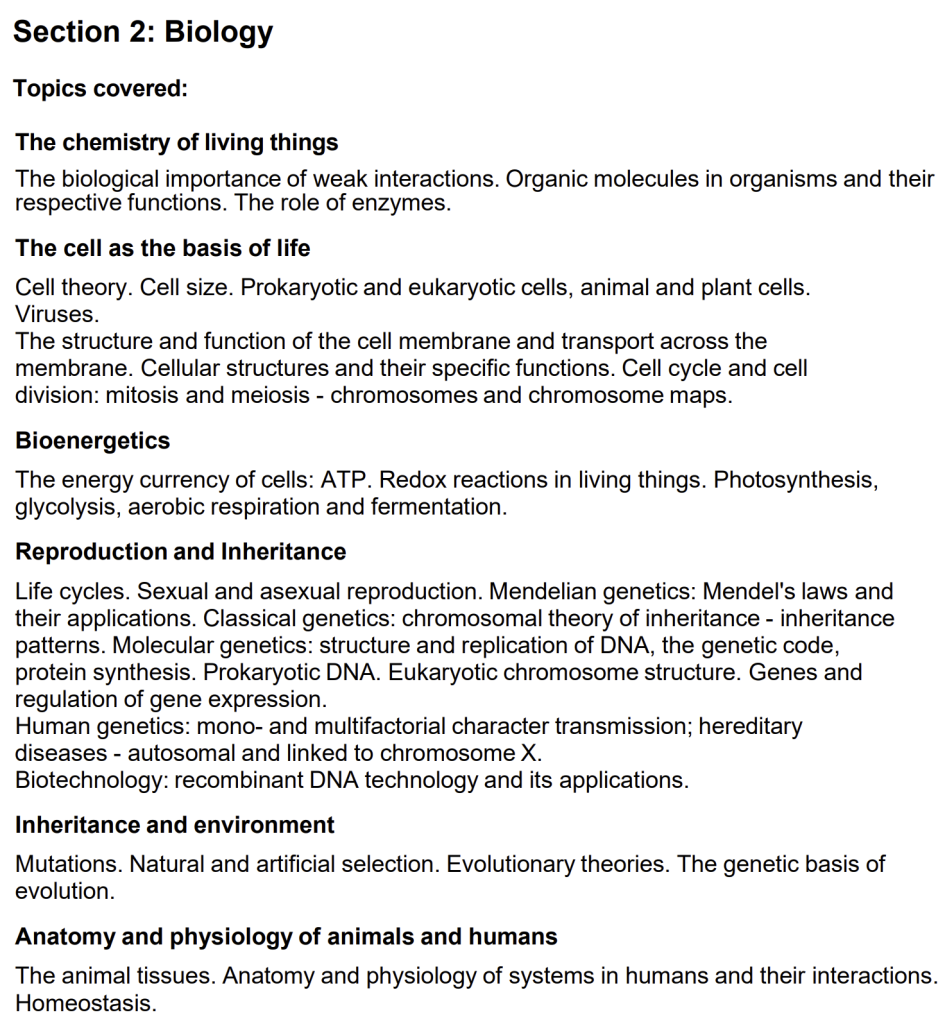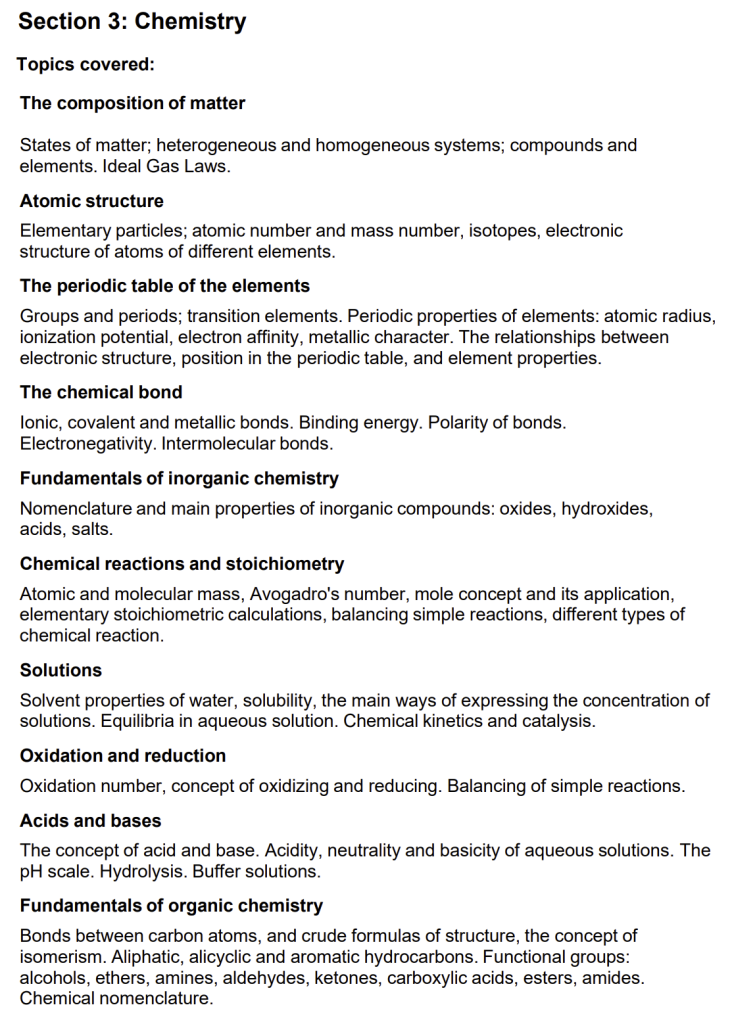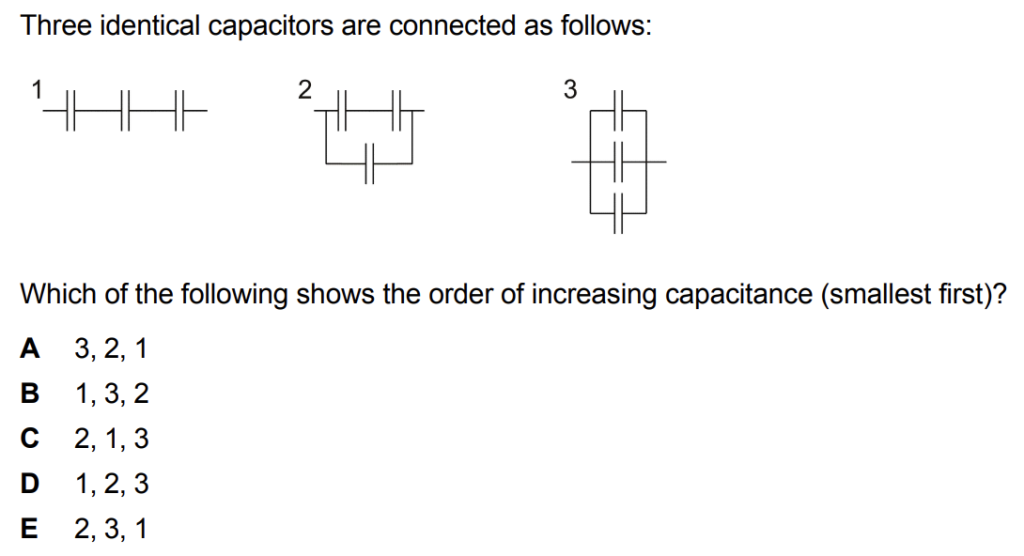

Paris University of Pavia | Ari's Past Student (2020)
28th of April, 2023In this comprehensive analysis, we’ll dive into the 2012 IMAT past paper, exploring the various sections and topics covered. Our goal is to provide invaluable insights for prospective candidates, helping them better understand the structure and content of the examination. We will delve into each section, assessing the question types and themes, as well as offering valuable advice on how to approach these topics. By examining the topics, question types, and providing recommendations for preparation, this analysis aims to serve as an essential resource for those looking to excel in the IMAT. So, let’s embark on this journey together, uncovering the intricacies of the 2012 IMAT and providing you with the knowledge and understanding needed to tackle this challenging examination.
Logical Reasoning and Problem-Solving
Starting off with the first section, Logical Reasoning and Problem-Solving, we will explore the types of questions and challenges that candidates faced in this part of the exam. This section is designed to test candidates’ ability to think critically, analyze information, and solve complex problems, skills that are essential for success in the medical field. In the following paragraphs, we will take a closer look at the various question types and topics covered in this section, providing insights into the specific areas that were emphasized in the 2012 IMAT exam.
Logical Reasoning
In the 2012 IMAT, the Logical Reasoning questions primarily focused on three main types of questions: drawing conclusions, identifying argument flaws, and strengthening arguments. The balance between these question types provided a comprehensive assessment of candidates’ critical thinking abilities.
Drawing Conclusions
A significant portion of the Logical Reasoning questions required candidates to extract conclusions from given passages or scenarios. These questions tested the candidates’ ability to synthesize information, draw inferences, and reach logical conclusions based on the evidence provided.
Identifying Argument Flaws
Another type of question that appeared in this section involved identifying flaws in arguments. Candidates were required to scrutinize the logic and structure of various arguments, pinpointing any errors or weaknesses. This skill is essential for medical professionals, as it allows them to evaluate the validity of research findings, clinical recommendations, and other critical information.
Strengthening Arguments
Lastly, the Logical Reasoning section also included questions that required candidates to strengthen arguments. In these questions, candidates were asked to identify additional information or evidence that could be used to bolster a given argument. This skill is crucial for medical professionals, as it helps them construct persuasive and well-supported arguments when advocating for their patients or presenting their findings to colleagues.
Problem-Solving
The Problem-Solving segment of the 2012 IMAT featured a larger number of questions than in some previous years, likely due to the absence of the General Knowledge section. The majority of these questions were numerical puzzles, which were complex but manageable, while a smaller portion consisted of more straightforward spatial puzzles.
Numerical Puzzles
The numerical puzzles in the 2012 IMAT required candidates to analyze data, perform calculations, and apply mathematical concepts to solve complex problems. These questions tested candidates’ quantitative reasoning skills and their ability to think critically and logically when faced with numerical challenges.
Spatial Puzzles
The spatial puzzles in this section were relatively straightforward but still required candidates to demonstrate their ability to visualize objects and their relationships in space. These questions assessed the candidates’ spatial reasoning skills, which are essential in various aspects of medical practice, such as interpreting diagnostic images or performing surgical procedures.


Overall, the Logical Reasoning and Problem-Solving section of the 2012 IMAT offered a balanced and comprehensive assessment of candidates’ critical thinking and problem-solving abilities. The absence of the General Knowledge section allowed for a more focused evaluation of these crucial skills, which are vital for success in the medical field.
Biology
The Biology section of the 2012 IMAT featured a diverse range of topics that assessed candidates’ understanding of essential biological concepts and processes. The questions covered a variety of subjects, from molecular biology to physiology, genetics, and cellular structures. In this analysis, we will categorize the topics into broad themes and provide insights into their relevance to the medical field.


Molecular Biology and Biochemistry
In the 2012 IMAT, several questions focused on molecular biology and biochemistry, including topics such as glycosidic bonds, structural molecules, the fluid mosaic model, nucleotide structure, and hydrogen bonds in water molecules. These questions required candidates to demonstrate their understanding of the fundamental building blocks of life and the biochemical processes that govern cellular functions.
Physiology and Homeostasis
Physiology and homeostasis were also well-represented in this section. Topics such as reflex arcs, blood vessels, hormones, and adrenaline function were included. These questions assessed candidates’ knowledge of how the body maintains its internal environment and responds to changes, which is critical for understanding the pathophysiology of disease and medical interventions.


Genetics and Inheritance
Genetics played a significant role in the 2012 Biology section, with questions covering gene expression regulation, genetic crosses, the genetic makeup of non-identical twins, chromosomes, and dihybrid crossing. These questions tested candidates’ understanding of the principles of inheritance, gene regulation, and the role of genetics in human health and disease.
Cellular Structures and Functions
Finally, the 2012 IMAT Biology section featured questions on cellular structures and functions, including topics such as the reflex arc, the fluid mosaic model, protein transport, and cellular organelles. These questions required candidates to demonstrate their knowledge of the complex structures and processes that occur within cells, which is essential for understanding the cellular basis of health and disease.
| Topic | Number of Questions |
|---|---|
| The chemistry of living things | 4 |
| The cell as a basis of life | 3 |
| Bioenergetics | 0 |
| Reproduction & Inheritance | 5 |
| Inheritance & Environment | 0 |
| Anatomy & Physiology | 6 |
The Biology section of the 2012 IMAT was comprehensive and diverse, covering a wide range of topics that are essential for a strong foundation in the medical field. Candidates were required to apply their knowledge of biological concepts and processes to answer questions related to molecular biology, physiology, genetics, and cellular structures and functions. This section provided a rigorous assessment of candidates’ understanding of the fundamental principles of biology and their relevance to medicine.


Chemistry
The Chemistry section of the 2012 IMAT assessed candidates’ understanding of a wide range of topics, from organic chemistry to physical chemistry and inorganic chemistry. These topics are crucial for building a strong foundation in the field of medicine, as they provide insights into the chemical processes and reactions that occur within the human body. In this analysis, we will categorize the topics into broad themes and discuss their relevance to the medical field.


Organic Chemistry
The 2012 IMAT Chemistry section featured several questions on organic chemistry, including topics such as aldehyde formula and lithium compound formula. These questions assessed candidates’ knowledge of the structure and properties of organic compounds, which are essential for understanding the chemical basis of life and the interactions between various molecules within the human body.
Physical Chemistry
Physical chemistry was also well-represented in the 2012 Chemistry section, with questions covering solvent properties of water, Avogadro constant, and electron affinities. These topics required candidates to demonstrate their understanding of the fundamental principles of physical chemistry, which govern the behavior of molecules and their interactions with one another. A solid grasp of these principles is necessary for understanding the chemical processes that occur within the human body and the ways in which various drugs and medical interventions can affect these processes.


Inorganic Chemistry
In the 2012 IMAT Chemistry section, inorganic chemistry topics such as transition metals and oxidizing agents were included. These questions tested candidates’ understanding of the properties and behavior of inorganic compounds, which play a vital role in many physiological processes within the human body. A comprehensive understanding of inorganic chemistry is crucial for understanding the roles of various elements and compounds in human health and disease.
Chemical Reactions
Finally, the 2012 IMAT Chemistry section featured questions on reaction types, which assessed candidates’ knowledge of the different types of chemical reactions that can occur between various substances. Understanding the principles governing chemical reactions is essential for predicting the outcomes of chemical processes within the human body and for designing effective medical interventions.
| Topic | Number of Questions | ||||||||||||||||||||||
|---|---|---|---|---|---|---|---|---|---|---|---|---|---|---|---|---|---|---|---|---|---|---|---|
| The composition of matter | 1 | ||||||||||||||||||||||
| Atomic Structure | 1 | ||||||||||||||||||||||
| The periodic table of the elements | 3 | ||||||||||||||||||||||
| The chemical bond | 0 | ||||||||||||||||||||||
| Fundamentals of inorganic chemistry | 2 | ||||||||||||||||||||||
| Chemical reactions and stoichiometry | 1 | ||||||||||||||||||||||
| Solutions | 0 | ||||||||||||||||||||||
| Topic | Number of Questions |
|---|---|
| Measures | 1 |
| Kinematics | 0 |
| Dynamics | 1 |
| Fluid Mechanics | 0 |
| Thermodynamics | 2 |
| Electrostatic and electrodynamics | 2 |
Mathematics


The Mathematics portion of the 2012 IMAT featured questions on logarithmic equations, pentagon vertices, and line equations. These topics are important for developing mathematical reasoning and problem-solving skills that are essential for understanding complex relationships and processes in the medical field.
Logarithmic Equations
Logarithmic equations are important in various medical applications, including the analysis of exponential growth and decay processes, such as bacterial growth, radioactive decay, and drug half-life calculations.
Pentagon Vertices
This topic is related to geometry and spatial reasoning, which are important skills for understanding the spatial relationships and structures within the human body, as well as in the design and development of medical devices.
Line Equations
Line equations are foundational in mathematics and are essential for understanding linear relationships, such as dose-response curves, statistical analyses, and other mathematical models used in medicine.
| Topic | Number of Questions |
|---|---|
| Algebra and numerical sets | 2 |
| Functions | 1 |
| Geometry | 1 |
| Probability and statistics | 1 |
The Mathematics and Physics section of the 2012 IMAT provided a comprehensive assessment of candidates’ understanding of essential concepts from both disciplines. This section tested candidates on a wide range of topics, reflecting the importance of mathematics and physics in the medical field, and their relevance to the understanding of complex physiological processes and the development of advanced medical technologies.




